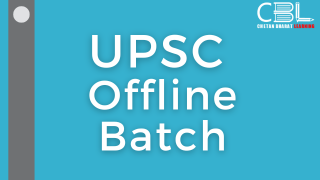Important for
Prelims: Indian Economy
Mains: General Studies Paper III
What is in the News ?
- In January this year, about eight billion (800 crores) transactions worth nearly $200 billion (Rs. 2 lakh crores approximately) were carried out on the Unified Payment Interface (UPI).
- This showcases India’s rapid success in transforming its payment system into a formal one.
Modes of Digital Payment in India
- Unified Payments Interface (UPI)
- Bharat Interface for Money (BHIM)
- UPI 123PAY
- UPI Lite
- Cards (including RuPay Debit Cards)
- Immediate Payment Services (IMPS)
- Aadhaar Enabled Payment System (AePS)
State of Digital Payments in India
- 40% of all payments done are digital
- Nearly 50 per cent of them are classified as small or micropayments
- The value of instant digital transactions in 2022 was four times more than the combined transactions in the United States, Britain, Germany, and France together.
- Indian digital payment systems are available in Singapore, UAE, Oman, Saudi Arabia, Malaysia, France, and BENELUX markets – Belgium, the Netherlands and Luxembourg – and Switzerland, among others.
- India has signed MoUs with 13 countries that want to adopt the UPI interface for digital payments
- Singapore: UPI-PayNow linkage
Enablers of Digital Payments in India
- JAM Trinity :
- Jan Dhan Accounts: As of 2022, over 46 crore bank accounts have been opened, with 56% belonging to women and 67% opened in rural and semi-urban areas
- Aadhar: Today 99% of adults have a biometric identification number with more than 1.3 billion IDs issued.
- Mobile: The cost of data dropped by 95% since 2016.
- UPI : Launched in 2016 by NPCI with 21 member banks, it is a public-private partnership (PPP) that the National Payments Corporation of India (NPCI) led with an interoperable platform to facilitates direct payments linked to a bank account.
Advantages
- Financial Inclusion: Expanded banking services like credit and savings to millions more Indians
- Last mile access: Extended the reach of government programs and tax collection
- Encouraged entrepreneurship: The digital infrastructure is seen as a set of ‘rail tracks’ laid by the government, on top of which innovation can happen at a low cost.
- The significant behavioural shift from a cash-driven economy.
National Payment Corporation of India(NPCI)
- The National Payments Corporation of India (NPCI, a not-for-profit company) is an initiative taken by the Reserve Bank of India (RBI) and the Indian Bank’s Association (IBA) to operate retail payments and settlement systems in India.
- This organisation was founded in the year 2008 under the Payment and Settlement Systems Act, 2007.
- NPCI International Private Ltd (NIPL): NIPL is the subsidiary of NPCI to popularise domestic payment technologies such as UPI and RuPay abroad and co-create payment technologies with other countries.
Facilitating Assets of NPCI
- National Financial Switch (for ATMs)
- National Automated Clearing House (NACH)
- CTS for Cheque payment
- Immediate Payment System(IMPS)
- RuPay Card
- Aadhaar Enabled Payment System (AEPS)
- Bharat Bill Payment System (BBPS)
- UPI
Read about Digital Payment Index, click here
Practice Questions for Prelims
Which among the following activities are not permitted to payments banks?
a) Remittance Services
b) Issuing ATM Cards
c) Issuing Credit Cards
d) Accepting Demand Deposits
Ans. c
Mains Practice Question
Q. What does the phrase “digitalization” mean? How will it contribute to a cashless society? What are the benefits and drawbacks of a cashless society? What actions has the government made to promote a cashless society?




Leave a Reply
You must be logged in to post a comment.